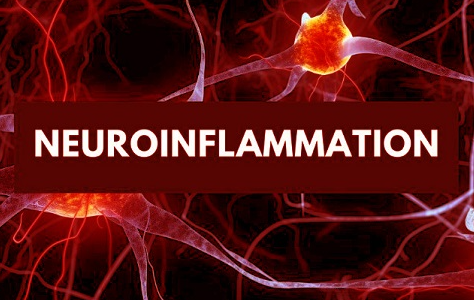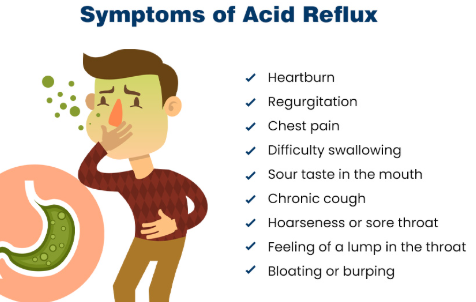Fibromyalgia is a chronic condition characterized by widespread pain, fatigue, and other symptoms that can significantly impact daily life. Despite its prevalence, diagnosing fibromyalgia remains challenging because it mimics many other conditions. One diagnostic tool often discussed in connection with fibromyalgia-related symptoms is the Cyclic Citrullinated Peptide (CCP) test. However, the CCP test is not used to diagnose fibromyalgia directly but rather to differentiate it from other conditions such as rheumatoid arthritis.
In this article, we will explore the role of the CCP test, its purpose, and how it fits into the diagnostic process for fibromyalgia.
What Is the Cyclic Citrullinated Peptide (CCP) Test?
The Cyclic Citrullinated Peptide (CCP) test is a blood test used to detect the presence of antibodies that target cyclic citrullinated peptides in the body. These peptides are proteins altered by a process called citrullination, which occurs during inflammation.
The CCP test is primarily used to:
- Diagnose Rheumatoid Arthritis (RA): A chronic autoimmune disorder that causes inflammation in the joints.
- Predict RA Severity: Higher levels of CCP antibodies are often associated with more severe joint damage and progression of RA.
The test is considered highly specific for rheumatoid arthritis, as the presence of anti-CCP antibodies is strongly associated with the condition.
Why Is the CCP Test Discussed in Relation to Fibromyalgia?
While the CCP test does not diagnose fibromyalgia, it is commonly used to rule out rheumatoid arthritis (RA) in individuals presenting with symptoms such as:
- Chronic joint pain
- Morning stiffness
- Fatigue
- Generalized discomfort
Since RA and fibromyalgia share overlapping symptoms, the CCP test helps healthcare providers determine whether the pain and stiffness are caused by inflammatory autoimmune disease (RA) or the non-inflammatory mechanisms associated with fibromyalgia.
How Is the CCP Test Conducted?
The CCP test is a simple blood test performed in a medical lab:
- Blood Sample Collection: A small sample of blood is drawn from a vein in the arm.
- Lab Analysis: The sample is analyzed for the presence of anti-CCP antibodies.
- Results Interpretation: The presence of these antibodies, along with other diagnostic markers, helps determine whether the patient has RA or a related autoimmune condition.
Understanding CCP Test Results
1. Positive CCP Test
A positive CCP test result indicates the presence of anti-CCP antibodies in the blood, which is highly suggestive of rheumatoid arthritis. It is one of the most specific tests for RA, helping doctors distinguish it from fibromyalgia.
- Implications for Fibromyalgia Diagnosis: If the CCP test is positive, fibromyalgia is unlikely to be the sole cause of symptoms, and an RA diagnosis may be pursued.
2. Negative CCP Test
A negative CCP test result means that no anti-CCP antibodies are detected in the blood. This result does not completely rule out rheumatoid arthritis, but it makes the diagnosis less likely.
- Implications for Fibromyalgia Diagnosis: A negative CCP test result, combined with the absence of other inflammatory markers (like elevated ESR or CRP), supports the likelihood of fibromyalgia as a primary diagnosis.
Why Is the CCP Test Important in Fibromyalgia Diagnosis?
The CCP test is a crucial part of the differential diagnosis process, which involves ruling out other conditions with similar symptoms to fibromyalgia. Since fibromyalgia is a diagnosis of exclusion, tests like the CCP are used to:
- Eliminate Inflammatory Conditions: Confirm that symptoms are not due to autoimmune diseases like rheumatoid arthritis.
- Clarify Treatment Pathways: If RA is identified, treatment will focus on managing inflammation and immune system activity. In contrast, fibromyalgia treatments focus on managing central pain sensitivity, sleep disturbances, and fatigue.
- Provide Accurate Diagnosis: Early and accurate identification of the underlying condition ensures appropriate treatment and symptom relief.
Limitations of the CCP Test in Fibromyalgia Diagnosis
While the CCP test is valuable, it has limitations when used in the context of fibromyalgia:
- Not Specific to Fibromyalgia: The test does not provide any information about fibromyalgia itself, as fibromyalgia is not associated with anti-CCP antibodies.
- False Negatives: In rare cases, individuals with RA may test negative for CCP antibodies, complicating the diagnostic process.
- Overlap of Symptoms: Joint pain and stiffness, common in both fibromyalgia and RA, require additional tests to reach a definitive diagnosis.
Complementary Tests and Procedures
To diagnose fibromyalgia, healthcare providers often use a combination of tests and evaluations to rule out other conditions:
- Erythrocyte Sedimentation Rate (ESR): Measures inflammation in the body.
- C-Reactive Protein (CRP) Test: Another marker for inflammation.
- Thyroid Function Tests: To rule out hypothyroidism, which can cause fatigue and muscle pain.
- Vitamin D Levels: Deficiency can contribute to musculoskeletal pain.
- Physical Exam: Includes checking for tender points and evaluating symptom patterns.
Key Differences Between Fibromyalgia and Rheumatoid Arthritis
Understanding the differences between fibromyalgia and RA helps clarify the importance of the CCP test in the diagnostic process:
| Feature | Fibromyalgia | Rheumatoid Arthritis (RA) |
|---|---|---|
| Cause | Centralized pain sensitivity | Autoimmune inflammation |
| Inflammation | Not present | Present |
| CCP Test Result | Negative | Typically positive |
| Primary Symptoms | Widespread pain, fatigue, sleep issues | Joint pain, swelling, morning stiffness |
| Treatment Approach | Pain management, exercise, CBT | Anti-inflammatory drugs, DMARDs |
Conclusion
The Cyclic Citrullinated Peptide (CCP) test is a valuable diagnostic tool that helps distinguish fibromyalgia from rheumatoid arthritis and other inflammatory conditions. While the test itself does not diagnose fibromyalgia, it plays an essential role in ruling out autoimmune diseases that share similar symptoms. By combining CCP test results with other diagnostic tools, healthcare providers can accurately diagnose fibromyalgia and develop effective treatment plans tailored to the individual.
Understanding the purpose and limitations of the CCP test empowers patients to engage in informed discussions with their healthcare providers, ultimately leading to better management of their symptoms and overall well-being.

Click Here to Visit the Store and find Much More….
For More Information Related to Fibromyalgia Visit below sites:
References:
Fibromyalgia Contact Us Directly
Click here to Contact us Directly on Inbox
Official Fibromyalgia Blogs
Click here to Get the latest Chronic illness Updates
Fibromyalgia Stores









